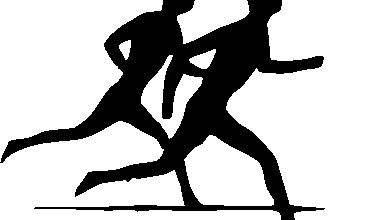The Role of GPS and Sensors in Evaluating Sports Equipment Use
In today’s competitive sports environment, the effective evaluation of sports equipment usage is more vital than ever. Advanced technologies, particularly GPS and sensors, allow athletes and coaches to monitor performance accurately. By integrating these tools, teams can obtain valuable insights into how equipment influences individual and team dynamics. For instance, GPS devices track players’ positions, distances, and speeds, enabling a deeper understanding of athlete performance in real-time. Simultaneously, sensors embedded in equipment track metrics like force, strain, and impact, offering a multi-dimensional view of how gear is utilized during play. Furthermore, accumulating and analyzing this data provides crucial information for making equipment adjustments that can enhance performance and reduce the likelihood of injury. Coaches can fine-tune training regimens based on detailed performance statistics, ultimately leading to better outcomes. Furthermore, data collected can guide manufacturers in creating superior prototypes based on athletes’ real-world experiences. This rich interplay of technology significantly enhances the feedback loop between athletes, their gear, and coaching staff. Thus, sports analytics is revolutionizing equipment evaluation and use.
The integration of GPS and sensors also aids injury prevention through predictive analytics. By analyzing performance data over time, coaches can identify patterns and trends that signify increasing injury risks. For example, several variables, such as excessive fatigue or repetitive strain on particular body parts, can be monitored meticulously using these devices. When a player’s workload exceeds recommended thresholds tracked by GPS devices, coaches receive alerts enabling them to modify training regimens or rest periods. This proactive approach ultimately allows athletes to remain within optimal performance zones, reducing their likelihood of sustaining injuries while using specific sporting equipment. Teams can apply this data not only during workouts but also monitor competitive matches, enhancing real-time decision-making. Athletes need immediate feedback to refine their techniques and equipment choices, relying on accurate data to inform those choices. Moreover, data transparency between players and coaches fosters a culture of collaboration, enhancing overall team performance. The synergy created by combining traditional sports science with modern analytics empowers this new breed of athletes who utilize information-driven strategies for success and longevity in their respective sports.
Enhancing Training Regimens with Wearable Technology
Wearable technology continues to evolve, providing athletes with an unprecedented level of detail regarding sports equipment performance. By employing wearable sensors and GPS devices during training, athletes can fine-tune their equipment choices based on their unique needs. For instance, a runner can monitor which footwear best supports their biomechanics while tracking their pace and strides through GPS metrics. This trend highlights the shift towards customized athlete experiences, allowing decisions to be backed by data rather than intuition alone. Leveraging real-time information about heart rates, speed, and calorie expenditure, athletes can optimize their training regimens remarkably. The objective feedback derived from these wearable devices instills a sense of accountability, prompting athletes to set specific goals and adhere to structured training plans diligently. Additionally, findings from these data-driven evaluations enable the assessment of various equipment functionalities, ensuring players select gear that enhances their capabilities on the field. This transformation within training methodologies paves the way for better-equipped athletes who are performance-oriented and informed as they compete. Therefore, the value of wearable technology lies not only in performance monitoring but also in fostering continuous improvement through educated increments in training intensity and strategies.
The analytical capabilities offered by GPS and sensors also extend to equipment manufacturers, providing them with critical insights. Engineers and designers can utilize the performance data to iterate and innovate on sports equipment designs, ensuring they address athletes’ practical needs effectively. For example, data from field tests may reveal where specific materials fail to provide optimal support or cushioning, offering a data-driven basis for design improvements. This feedback loop between athletes and manufacturers reinforces the development process with real-time input from users. Moreover, manufacturers can highlight data-backed performance characteristics to market their equipment more effectively, offering empirical evidence of benefits versus competitors’ products. As athletes demand more from their gear, understanding how different pieces of equipment perform in various conditions can determine market success. By harnessing real-world performance data, brands create products aligned with athletes’ actual experiences, transitioning from traditional marketing strategies to more personalized offerings. Thus, sports analytics becomes a competitive edge, enabling manufacturers to stay ahead in a rapidly evolving industry while continuously meeting the demands of elite and recreational athletes alike.
Future Trends in Sports Equipment Analytics
Looking ahead, the role of GPS and sensors in sports equipment evaluation is only set to expand. Emerging technologies, such as artificial intelligence and machine learning, can further refine data analytics capabilities, offering deeper insights into how equipment impacts player performance. For example, AI can analyze vast amounts of data to discern patterns, predict equipment wear-and-tear, and suggest optimal maintenance schedules. This evolution promises to personalize player experiences even further, with bespoke equipment solutions that cater to individual performance and safety needs. Virtual reality (VR) is also finding its way into the conversation, where simulated environments allow athletes to test equipment performance in various conditions without the risks associated with live practice. Moreover, broadening the scope to include environmental factors such as temperature, field type, and weather conditions could enhance equipment development. These innovations will set new standards within sports analytics, ensuring athletes are equipped safer and faster than ever before. Therefore, the continuous integration of cutting-edge technology will guarantee that the intersection of sports science and equipment evaluation becomes broader and more efficient, securing subjects in the realm’s future development.
This evolution translates not only into performance indicators but also a complete rethinking of how we view sports equipment as integral components of training and competition. With data-driven insights guiding equipment choices, athletes continually adapt their gear according to feedback from these strategic assessments. For instance, a baseball player might select a bat based on metrics derived from previous swings, prioritizing balance and speed over everything else. Coaches will increasingly become data analysts, interpreting complex datasets and translating those findings back into actionable strategies for their teams. In this new paradigm, the athlete’s performance will be seen as a relationship between the physical aspect of equipment and the quantitative metrics derived from analytics tools. This redefined relationship promises to enrich training practices, enabling sports professionals to make informed decisions grounded in a comprehensive understanding of their equipment utilization. As we progress, data-driven methodologies will become commonplace, dictating not just how individuals train but how entire teams and sports organizations build their training methodologies, gear choices, and their overall framework for achieving success on the field.
Conclusion: The Importance of Data in Sports
Ultimately, the fusion of GPS technology and sensor analytics is paving the way for revolutionary changes in how sports equipment is evaluated and utilized. The ability to gather, analyze, and apply data from equipment use during training and games influences athlete performance, longevity, and injury prevention. By making informed choices backed by real-time feedback, athletes can maximize their performance potential while minimizing risks. The future of sports equipment lies in this symbiotic relationship between technology and practice, where data not only informs equipment design but also enhances strategic training efforts. This underscores the growing significance of analytics in sports, encouraging a paradigm shift from conventional methods to streamlined, data-supported practices. As the industry embraces these advancements, coaches and athletes must collaborate closely to ensure optimal performance through data-driven solutions. By investing in the integration of modern technology, the sports world is ushering in a new era, where informed decision-making leads to measurable success and improved safety for all athletes. Thus, the rising importance of GPS and sensors will only continue to expand, continuously adapting the landscape of equipment evaluation as we move forward.
In summary, understanding the role of GPS and sensors in evaluating sports equipment use highlights the intersection of technology and athletics. The application of these tools not only enhances performance insights but also revolutionizes training methodologies, effectively reshaping the entire sports industry. The valuable feedback garnered from analytics strengthens the foundations of athlete safety, performance enhancement, and team strategies. Embracing technological advancements will prepare athletes for greater engagement, confidence, and longevity in their respective sports. As we continue to see innovations that simplify the data tracking process, a more profound aspect of the athlete’s journey will unfold. The sports community is on the brink of radical transformations, where real-time analytics will redefine how performance is assessed and optimized. Hence, the potential pathways created through data-influenced approaches will solidify athletes’ trajectories towards greater sporting excellence. It’s critical for all stakeholders, including athletes, coaches, and manufacturers, to engage in leveraging these analytics, fostering a collaborative environment focused on performance and safety through technology. The future landscape of sports will demand a comprehensive understanding of athletes’ equipment choices, ushering in a new age of informed athletes capable of attaining peak performance.


